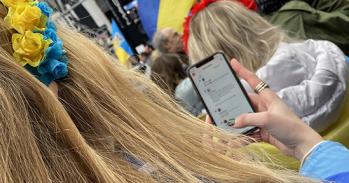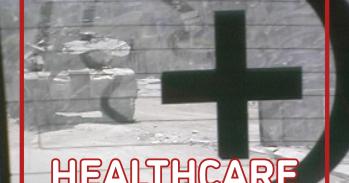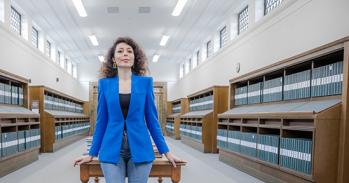
Professor Mark de Rond from Cambridge Judge Business School outlines some of the unique pressures faced by doctors and nurses in Ukraine, in this piece originally published in The Conversation.
Professor Mark de Rond from Cambridge Judge Business School outlines some of the unique pressures faced by doctors and nurses in Ukraine, in this piece originally published in The Conversation.
Quite aside from the deadly and disorienting consequences for Ukraine’s citizens, Russia’s invasion places unique pressure on its doctors and nurses.
Cardiac arrests, caesareans and appendectomies are now often accompanied by injuries that should be relatively rare: gunshot and shrapnel wounds, third-degree burns, double or triple amputations, loss of sight, brain and spinal cord injuries. Were chemical weapons to ever be deployed, one can add blistering, convulsions and muscle paralysis. Then there are decisions unimaginable to many of us but unavoidable when resources are scarce: who will live and who will not.
With advance notice, medical staff can stock up on vast blood supplies, platelet-rich plasma and refrigerators. They can hone the specialist skills required for resuscitating and then repairing what war destroys. During the long war in Afghanistan, for example, military medical staff from allied forces underwent rigorous training before deployment. British surgeons and anaesthetists were required to complete a five-day military operational surgical training course at the Royal College of Surgeons where they practised damage control surgery on human cadavers, deliberately “wounded” to mimic typical injuries sustained during war.
From London, they’d move to an old aeroplane hanger outside the ancient English cathedral city of York to reappear, as if by magic, in a replica of Camp Bastion field hospital in Helmand province, Afghanistan. Here, they relied on actual amputees and theatrical makeup artists to reenact the patient journey from a helicopter to an intensive care unit. Even the thumping of an approaching Chinook was played over the sound system as doctors and nurses rolled up their sleeves.
Given the speed at which the conflict is advancing, Ukraine’s doctors make do instead with a 12-hour online equivalent designed and run by Dr David Nott and Dr Henry Marsh. Nott has 30 years’ experience working in conflict and disaster zones as a general and vascular surgeon and, through his David Nott Foundation, offers lifesaving treatment for victims by better equipping local doctors who care for them.
Unseen injuries
Other challenges facing doctors and nurses are more subtle, longer lasting, and more personal. War can be deeply traumatising, even for doctors and nurses not in the line of fire, meaning that rates of post-traumatic stress disorder (PTSD) are often as high for medical staff as for those at immediate risk of injury or death.
Until recently, the causes of PTSD were not well understood. We now know more about the extent to which cultural expectations, professional role identity, and organisational protocol (or formal rules) can exacerbate feelings of senselessness, futility, and surreality, and threaten people’s existential grounding.
This is because these contexts can trigger and amplify repeated experiences of senselessness (or the inability to justify war and its consequences), of futility (or the inability for medics to live up to their own expectations of “making a difference” as “compassion fatigue” sets in), and of surreality (or the inability to reconcile the absurdities of war with “life as normal”).
Senselessness, futility and surreality characterise the experience of war for many who are exposed to it. And when these experiences are sustained, they can dislocate a person’s sense of what they consider “meaningful”, “good” and “normal” to the point where they become an existential threat. They are war’s invisible injuries.
To compensate for this sense of dislocation, doctors and nurses have been observed to resort to innovative coping strategies. For example, they will refrain from publicly criticising the war effort for fear of hurting morale. They avoid emotional engagement by not attending funerals. They use humour to deflect and manage constant exposure to the cruelty of war. They establish enclaves of normality by importing home comforts (for example, in Camp Bastion, doctors organised Friday night pizzas and Sunday morning pancakes). They create improvised spaces in which to temporarily withdraw from war and catch up on Netflix. They grow flowers in the most uninhabitable spaces.
Sadly, the unintended consequence of this is often that it makes war even more surreal and cruel and the ability to help turn the tide more difficult.
Under circumstances such as those facing doctors and nurses in Ukraine today, the best prevention may be to accept that war is ugly, indiscriminate and savage. It is also a reminder of what is lost and what we must now work hard to preserve and repair.![]()
This article is republished from The Conversation under a Creative Commons license. Read the original article.

The text in this work is licensed under a Creative Commons Attribution 4.0 International License. Images, including our videos, are Copyright ©University of Cambridge and licensors/contributors as identified. All rights reserved. We make our image and video content available in a number of ways – as here, on our main website under its Terms and conditions, and on a range of channels including social media that permit your use and sharing of our content under their respective Terms.




